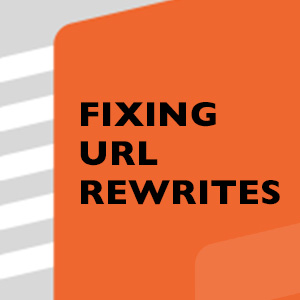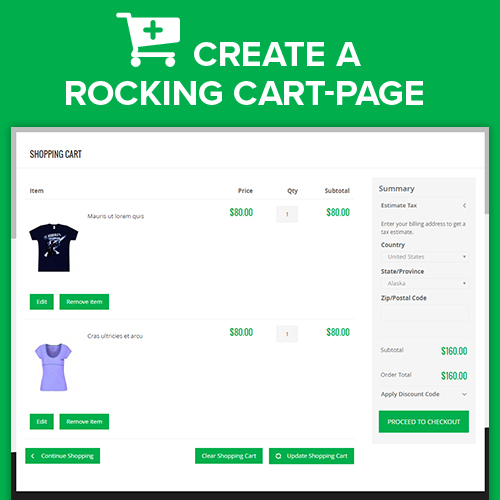Once upon a time, when e-commerce was just nothing more than a startup idea for businesses, getting customers to click the right buttons and making the purchase was as easy as 1-2-3. All you had to do was launch an e-commerce website and zap! You’ve got the sales that you needed. You had a market that was hungry for stuff, and you were only too willing to feed their shopping appetite.
But of course, that was once upon a time. Somewhere along the way, the story has taken a 90-degree shift, and now businesses are scrambling online to catch up with where the happy customer online has left the usual marketing trail.
As time went on, it became more and more challenging for you to win your market over and to get them to be your buyers. The e-commerce landscape evolved. Businesses identical to yours began popping up—one after another. But it was not just about the fiercer competition. It was also about how the average consumer could now have better access to information, and with only a few taps and swipes at that!
With the ‘buyer’s journey’ (as marketers often call it) shifting into something non-linear, e-commerce began to take a whole new perspective. The shift in the ‘buyer’s journey’ continues to pose a challenge even to the most experienced online seller. So if you’re having a tough time targeting the right people at the right time, then rest assured that you’re not alone. And you’re not a hopeless case!
To find out how your business can best deal with the challenge, let’s first have a look at the buyer’s journey and understand what actually takes place before you make or lose a sale.

A deeper understanding of your buyer’s Ecommerce Journey
Mapping Out Your Buyer’s Journey
Earlier, we have mentioned that the buyer’s journey refers to the process that all buyers have to go through as they make purchasing decisions. While this may sound like a simple marketing trek, I’m sure you know better. With so many sellers trying to persuade your potential buyer to take their offers, it can be very difficult to get buyers to single your products out and choose to close the deal with you.
Is there any way you could make that non-linear decision-making process work for you? Well, as with any other journey, a buyer’s decision to go down your path has a lot to do with how well you’ve paved the way. So really, mapping out your buyer’s journey has everything to do with you taking a step back and critically assessing your e-commerce site.
Sites are assessed through a consideration of two factors: site performance and content.
When we say ‘site performance’ we’re talking about the technical side of things. Is your site working as it should? Has it been optimized to reach your target audience? Or have you over-optimized your site and are running the risk of receiving a Google penalty? Next, check out your site content. Does it match the user intent of the audience?
We’re asking you these questions because a lot of e-commerce sites are still stuck with the old way of doing things. Remember how Google algorithms used to determine ranking by putting more weight on a page’s keyword density rather than on its actual content? Apparently, a lot of e-commerce sites still come up with content based on that old algorithm. The result? A site written for search engines instead of for people. If that’s how it is for your site, then we’re telling you straight up—that has got to change.
For you to come up with an e-commerce site that would appeal to your buyers, you need to consider their mindset and tailor your content accordingly. By doing so, you increase the chances of expanding your present audience and improving your conversion rates.
To understand your buyer’s mindset, let us now learn about the stages of the buyer’s journey.

Customer Journey
The entire process is generally mapped out this way:
- Awareness
- Consideration
- Decision
You may be surprised that the journey has only three stages, but as we have already pointed out at the onset of this article, the buyer’s journey is a whole lot more complex. And because every e-commerce site has its own reference point for what it considers to be ‘valuable content’ for their target audience, we can’t very well give away any generic strategy and hope it would help you make the cut.
We could, however, help you customize your buyer’s journey with the aim of making potential customers. The first step is to identify what draws these potential customers to your site.
Learning How to Identify Triggers
Identifying triggers is the crucial first step to ensuring that you’re reaching the audience that you intend to reach. To do this, you would need to gain understanding of your existing audience. There are several ways you could go about this, but the most common method is through paid search data. Using Google Analytics, check out Acquisition > AdWords > Search Queries. Once you’re there, exclude any branded terms. We exclude branded terms in this case because we want to identify potential customers who do not yet have a clue as to who you are and have yet to realize that they need what you sell.

Understand what actually takes place before you make or lose a sale
Now, the next step is for you to narrow down the results you’ve got by including terms that will typically give you a clue as to what the buyer’s thoughts are at each stage. At this point, what you’re trying to do is to mind-guess your target audience.
If your potential customer is still at the Awareness stage, then he or she is most likely thinking along these generic terms—what, when, where, why, who, and how. For example: What can I do during the holidays?
Next is the Consideration stage. At this point, your potential customer already has a grasp of what they want. They’re already aware of the options they have. So now they want to know where they could possibly get what they want considering their circumstances. Included in this consideration is your potential customer’s lifestyle, and they’re most likely going to ask questions such as, Can I buy it locally? Is the price reasonable? Does it fit my budget? Here are the terms, then, that they are most likely to use at this point—top, best, cost, ratings, reviews, versus, worth, and value. So building on our previous example, your potential customer could be keying in phrases such as, Top holiday destinations.
Lastly, we reach the Decision stage. At this point, your potential customer is already aware of what he or she needs and is considering an option. Now the only thing that’s left for your potential customer to do is to decide where they could best avail of that option. So it is safe to assume that your buyer’s searches are going to be more specific at this stage. After all, they already know what they want; they’re just hunting for it. Searches are most likely going to be along these lines—where to buy, discount code, and other specific keywords. For example, Travel package to Maldives.
Here’s a tip: Before deciding that you know enough about your target audience after completing your evaluation for the Decision stage, make sure that you do not overlook the Post-Purchase stage. It’s actually often neglected. Key terms such as log in, returns, and repairs along with your brand name will help you identify what your clients’ common purchasing problems are. Having an umbrella understanding of their concerns will then allow you to come up with strategies that would address these and improve your customer relations. This way, you’re more likely going to earn a loyal customer who would be more than happy to talk about you and your products and services to their friends.
But what if you don’t have paid search data? Don’t worry! On Google Analytics, click on Behavior > Site Search > Search Terms so you’ll have a grasp on what users are looking for. Having accurate customer insight is vital if you are to assess whether your site is offering the right content for the right people, and is a great way for you to see where you can work on to optimize your site in terms of your title tags and meta descriptions.
Once you’re through with looking into the mindset of your target market, you need to consider the next aspect of the buyer’s journey—you.
Be There and Be Present

It’s no longer critical for a shopper to be present in-store, but rather for the store to be present wherever the shopper is.” – Think With Google.
Let’s backtrack a bit and focus on the Post Purchase stage we’ve mentioned above. As you already know, the purpose of evaluating how you perform on that stage is crucial for good customer relations. But information is only of benefit if you do something about the purchase-related issues that your customers are encountering. You need to use that set of information as a springboard of some sort—a starting point for you to convert each site visit into a sale.
Make your clients feel that you are aware of their concerns and that you are doing something about them. Have the “be there at all times” mindset, and learn to build your site based on what your target is actually interested in. That’s really the whole point behind your customer research. Involved in that sort of mentality is ensuring that your content is up-to-date. To that end, you need to learn how to anticipate market demands.
Of course, guessing games would not do when it comes to figuring out what is going to be in the rage in the coming months. You need to make use of reliable tools that will help you accurately predict trends. That’s where Google trends can come in handy. Google Trends allow you to feel the market pulse, so to speak, and infer on the things that your site content should touch on to be able to keep your market’s interest.
A similar tool to Google Trends is Shopping Insights, which works to help you explore trends and popularity of products. The downside to this tool is that it’s still at its beta stage and can only cover the United States for now.

To be always present, you need to be on mobile.
Whichever method you plan to employ to learn of the trends, you need to keep in mind several key takeaways. First, to be always present, you need to be on mobile. Next, you need to make sure that you don’t just stuff your site with random phrases and keywords. You need to have excellent and relevant content which would really be useful for your site’s visitors.
It doesn’t matter what your site is going to be about. You could be selling tour packages, offering wholesale rates for clothes, or other e-commerce venture you may have. It doesn’t really have to matter. What matters is that you’re there—present even on their mobiles, so you could influence their purchasing decisions.
The impact of mobile searches on purchasing decisions cannot be denied. More people are on mobile rather than in front of their computers. So when a buyer, say, wants to buy a new dress or go out somewhere to dine, or basically do anything, the buyer would most of the time just check for the information via a mobile phone.
It’s no wonder that the mobile phone is now considered as the new shopping assistant! With the possibilities that such technologies have afforded us, it is unsurprising that the e-commerce landscape is fast changing. Now, everyone gets to have the chance to look up a company online before heading to their physical store.
The bottom line? Learn how to go mobile with your business. Shift your marketing strategy now while you still can, and keep up with the influx of its influence on the market’s purchasing decisions. As a quote goes, “The future of retail lies in the smallest moments. It’s no longer critical for a shopper to be present in-store, but rather for the store to be present wherever the shopper is.” – Think With Google.
Do you feel that you need help in identifying your clients’ pain points? Would you like to have your marketing strategy assessed to see if it matches your target audience’s customer journey? Then feel free to get in touch with us!
For the meantime, we live you with these three tips that would definitely work to enhance your buyer’s journey. We call it, the 3 C’s.
- Consistency across all devices: Whether on mobile or through a desktop computer, you need to be sure that your site displays and works properly.
- Capture customers’ attention immediately: With so many competitors all lying in wait for the next potential customer, it can be all too easy for you to lose a potential sale. So make sure that you get to capture their interest from the start. Be catchy!
- Calibrate content according to your customer’s aperture: Learn from the information you have gathered on their preferences and mindset. This will help you produce both great and relevant content that will convert visits into purchases.
We hope this would help you figure out which aspects you could work on to improve your conversion rates. Again, if you need help, don’t hesitate to reach us! We’d be glad to help you realize your e-commerce potentials to the full.


